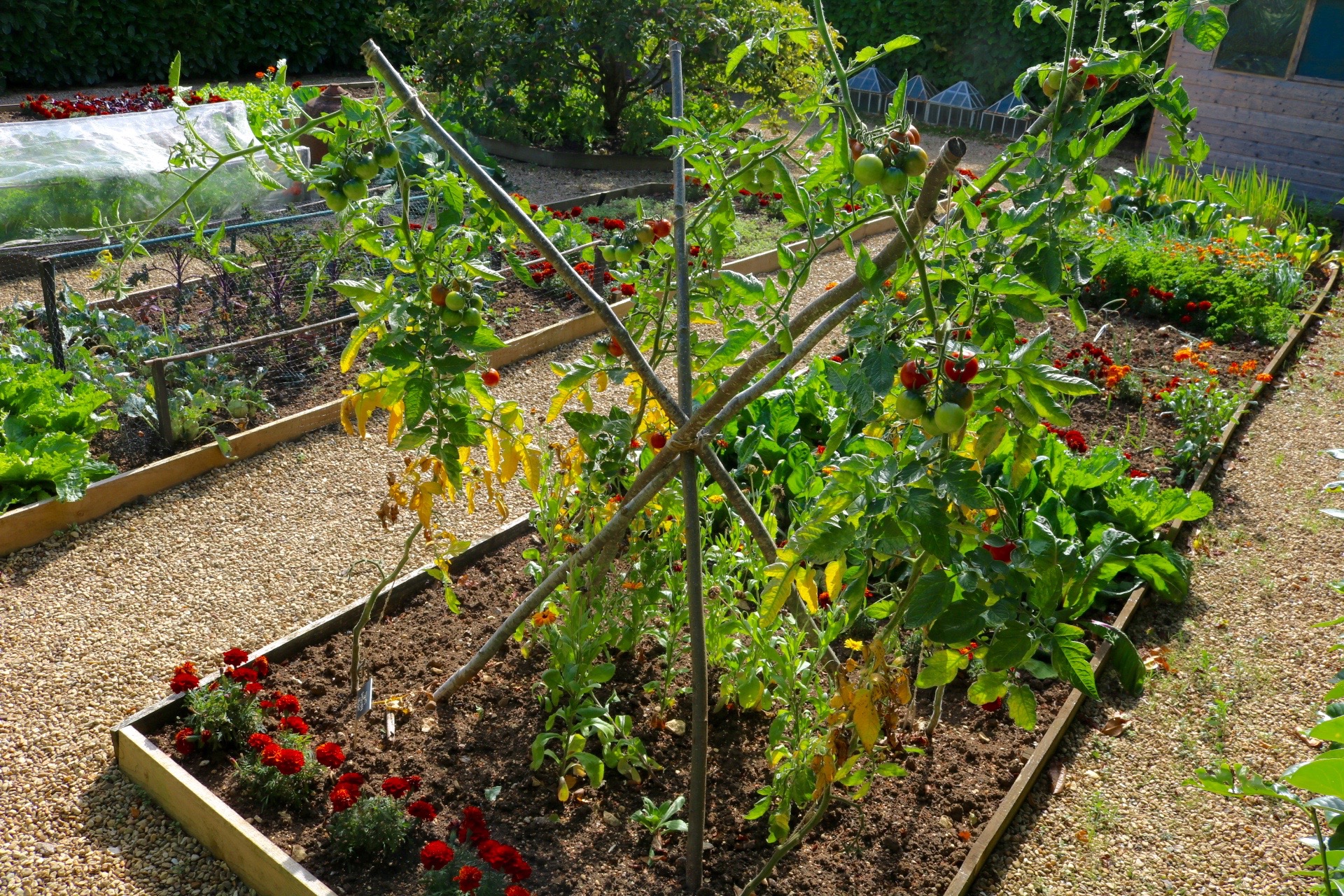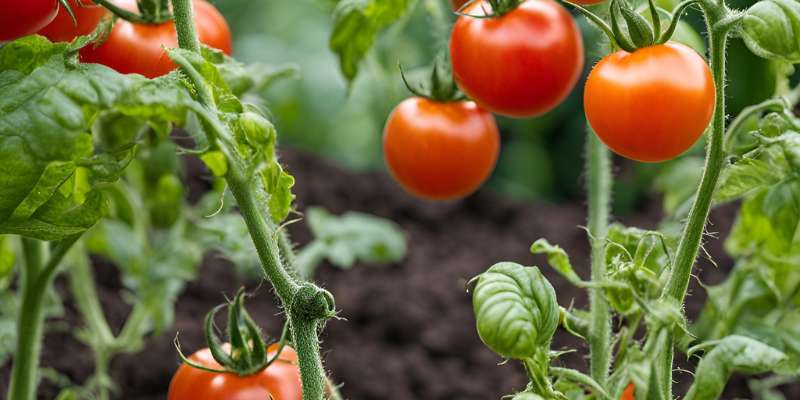Knowing when to put tomato plants outdoors is crucial for a healthy harvest. Timing affects growth and fruit production.
Tomato plants need the right conditions to thrive. The weather must be warm enough to support their growth. Planting them outside too early can risk exposure to cold temperatures. This can harm the plants and reduce your harvest. Understanding the best time to transplant your tomato seedlings outdoors is key.
It ensures they grow strong and produce plenty of fruit. Keep reading to learn the ideal time and conditions for putting tomato plants outside. This will help you achieve a successful and bountiful tomato crop.

Credit: teabreakgardener.co.uk
Optimal Planting Time
Plant tomatoes after the last frost date. Frost can kill young plants. Check local frost dates for your area. Wait one or two weeks after the last frost. This ensures the soil is warm enough.
Day temperatures should be at least 70°F. Night temperatures should not drop below 50°F. Tomatoes need warm weather to thrive. Cold nights can harm the plants. Use a thermometer to check temperatures.
Geographical Considerations
Different regions have varying last frost dates, crucial for deciding when to transplant tomato plants outdoors. Ensure soil temperatures are consistently above 60°F for optimal growth. Local climate and weather patterns significantly impact the best planting time.
Regional Climate Zones
Tomato plants need warm weather to grow well. In cold zones, planting too early can harm them. In warmer zones, you can plant earlier. Check your local frost dates. Avoid planting before the last frost. Tomatoes need at least 6 hours of sunlight. Too much heat can also harm them. In very hot zones, wait until it cools down a bit.
Microclimates
Microclimates can affect tomato growth. Your backyard may have different conditions. Look for sunny spots with good shelter. Avoid windy areas. Look near walls or fences. They can keep the plants warm. Check the soil. It should drain well. Wet soil can harm the roots. Adjust planting time based on these factors.
Soil Preparation
Check the soil temperature before planting. It should be at least 60°F. Use a soil thermometer for accurate readings. Warm soil helps tomato plants grow better. Cold soil can slow growth.
Soil needs to have the right nutrients. Test the soil nutrient levels. Add compost or organic matter if needed. Balanced soil nutrients are essential for healthy plants. Avoid using too much fertilizer. It can harm the plants.

Credit: www.janeperrone.com
Transplanting Techniques
Hardening off is vital for tomato plants. It helps them adjust to outdoor conditions. Start by placing plants outside for a few hours daily. Gradually increase the time. This process reduces shock. Protect plants from strong wind and direct sun. A shaded area works best at first.
Proper spacing is key. Plant tomatoes 24 to 36 inches apart. This gives each plant enough room. Good air flow prevents disease. Bury the plant deep. Cover the stem up to the first set of leaves. This encourages strong roots. Deep roots help plants absorb more nutrients.
Weather Monitoring
Monitor weather closely to know the right time to put tomato plants outdoors. Ideal temperatures are above 50°F at night.
Frost Warnings
Check for frost warnings in your area. Frost can damage young tomato plants. Plant tomatoes after the last frost. Watch the weather forecast daily. A sudden frost can still happen. Cover your plants if frost is expected.
Rainfall Patterns
Observe rainfall patterns before planting outdoors. Too much rain can drown young plants. Not enough rain can dry them out. Ensure the soil is moist but not waterlogged. Check the weather forecast for heavy rains. Use mulch to retain soil moisture. Water plants regularly in dry spells.
Common Mistakes To Avoid
Planting tomatoes too early can lead to many problems. The ground might still be cold. This can slow down plant growth. Cold weather can also damage young plants. Frost can kill them. Wait until the danger of frost has passed. Ensure the soil is warm enough. This gives your tomatoes a better start.
Good soil is key for healthy tomato plants. Poor soil can stunt growth. Ensure the soil has good drainage. Tomatoes do not like soggy soil. Add compost to improve soil quality. Check the soil pH. Tomatoes prefer slightly acidic soil. Proper soil conditions help plants thrive.
Using Tools And Resources
Gardening calendars can help you plan. They show the best times to plant. These calendars consider your local climate. They guide you on when to put tomato plants outdoors. This can improve your success.
Weather apps are useful tools. They show current and future weather. You can see if the temperature is right. Tomato plants need warmth. Use the app to avoid cold nights. This helps your plants grow strong.
Expert Tips
Tomato plants need warm soil to grow well. Plant them outside after the last frost. Check your local frost dates. Nights should be above 50°F. Cold nights can harm young plants. Use mulch to keep soil warm. Water plants in the morning. This helps them stay strong and healthy.
Experienced growers suggest hardening off plants. This means getting them used to outside. Start with two hours of sunlight. Increase time each day. Do this for a week. This helps plants adjust. They will be ready for the garden. Strong plants give better tomatoes. Always choose a sunny spot for planting. Tomatoes love sunlight.

Credit: www.youtube.com
Frequently Asked Questions
When Is The Best Time To Plant Tomatoes Outdoors?
The best time to plant tomatoes outdoors is after the last frost date. This ensures the soil is warm enough. Usually, late spring is ideal.
Can I Plant Tomatoes In Early Spring?
Planting tomatoes in early spring is risky due to frost. Wait until temperatures consistently stay above 50°F (10°C) at night.
How Do I Know If It’s Too Cold For Tomatoes?
Tomatoes prefer temperatures above 50°F (10°C) at night. If temperatures drop below this, it’s too cold to plant them outdoors.
Should I Harden Off Tomato Plants?
Yes, hardening off tomato plants is essential. Gradually expose them to outdoor conditions over a week to reduce transplant shock.
Conclusion
Tomato plants thrive best when planted outdoors at the right time. Wait until the last frost date passes. This ensures your plants won’t freeze. Warm soil is vital for strong growth. Daytime temperatures should consistently reach 70°F. Nighttime temperatures should stay above 50°F.
These conditions help tomatoes flourish. Always monitor weather forecasts. Sudden cold snaps can harm young plants. Planting at the right time rewards you with healthy, productive tomato plants. Happy gardening!

My mission is to help you bring the beauty of nature indoors with expert advice, detailed plant care guides, and creative design ideas.





Leave a Reply